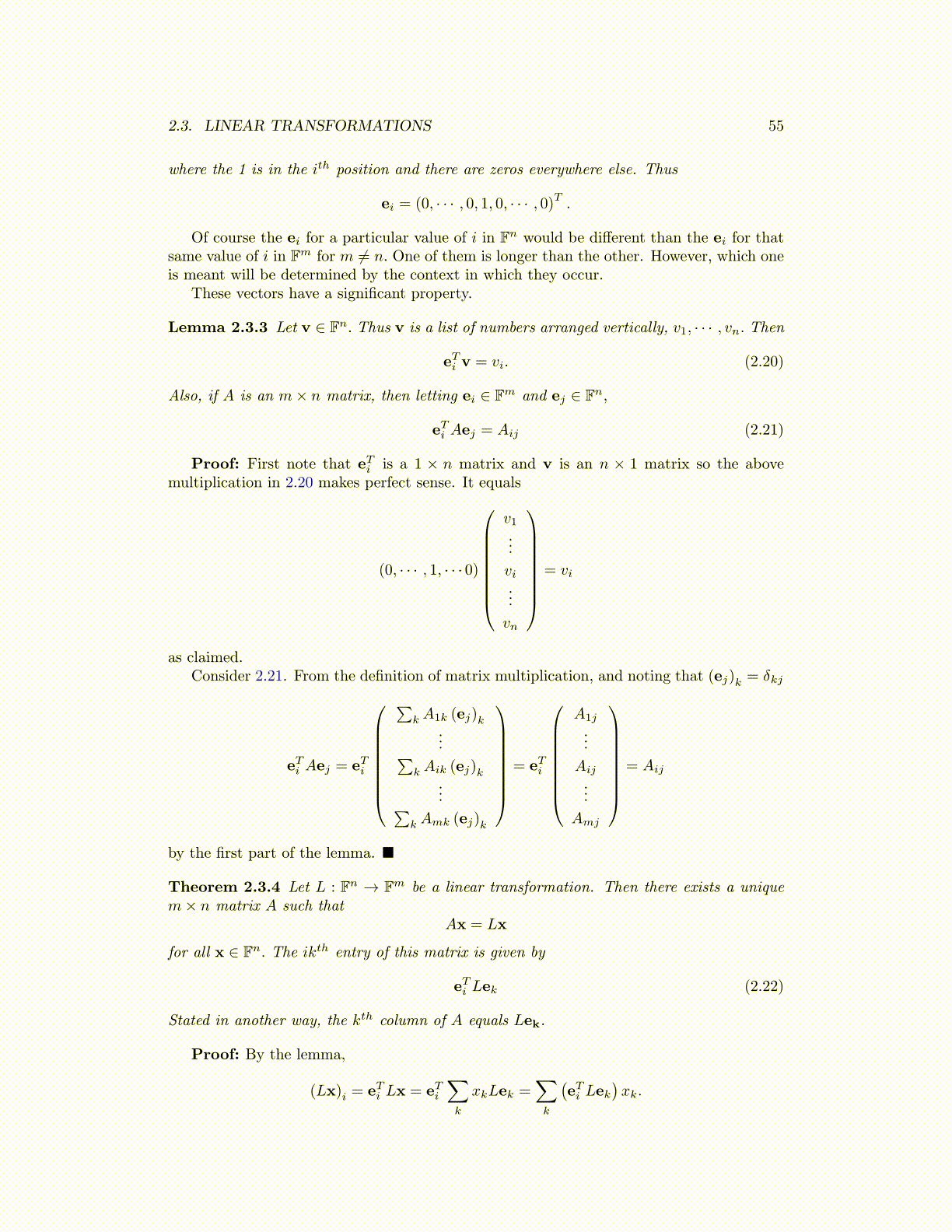
2.3. LINEAR TRANSFORMATIONS 55
where the 1 is in the ith position and there are zeros everywhere else. Thus
ei = (0, · · · , 0, 1, 0, · · · , 0)T .
Of course the ei for a particular value of i in Fn would be different than the ei for thatsame value of i in Fm for m ̸= n. One of them is longer than the other. However, which oneis meant will be determined by the context in which they occur.
These vectors have a significant property.
Lemma 2.3.3 Let v ∈ Fn. Thus v is a list of numbers arranged vertically, v1, · · · , vn. Then
eTi v = vi. (2.20)
Also, if A is an m× n matrix, then letting ei ∈ Fm and ej ∈ Fn,
eTi Aej = Aij (2.21)
Proof: First note that eTi is a 1 × n matrix and v is an n × 1 matrix so the abovemultiplication in 2.20 makes perfect sense. It equals
(0, · · · , 1, · · · 0)
v1...
vi...
vn
= vi
as claimed.Consider 2.21. From the definition of matrix multiplication, and noting that (ej)k = δkj
eTi Aej = eTi
∑k A1k (ej)k
...∑k Aik (ej)k
...∑k Amk (ej)k
= eTi
A1j
...
Aij
...
Amj
= Aij
by the first part of the lemma. ■
Theorem 2.3.4 Let L : Fn → Fm be a linear transformation. Then there exists a uniquem× n matrix A such that
Ax = Lx
for all x ∈ Fn. The ikth entry of this matrix is given by
eTi Lek (2.22)
Stated in another way, the kth column of A equals Lek.
Proof: By the lemma,
(Lx)i = eTi Lx = eTi∑k
xkLek =∑k
(eTi Lek
)xk.